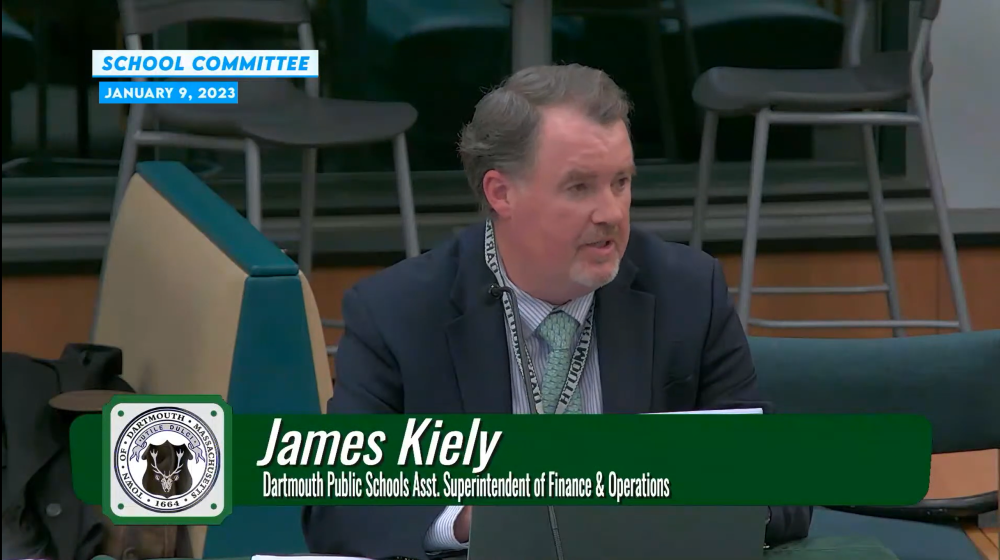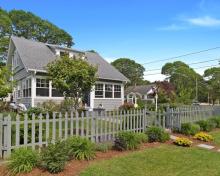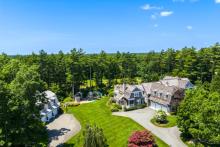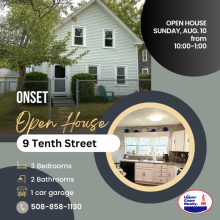Updated: School Committee eyes major upcoming projects
Some big-ticket projects might be on the horizon for Dartmouth's public schools as the School Committee discussed its five-year capital improvement plan at its Jan. 9 meeting.
The largest of these projects will be the replacement of the Dartmouth Middle School building, which committee members said would cost “millions” and would likely need to be funded within the next five years.
“We can’t push it down the road forever,” said Assistant Superintendent of Finance and Operations James Kiely. “It may not be that this year is the time to push it, but we have to be cognizant of the fact that our schools are continuing to age.”
Kiely said that the middle school building was judged to be the most in need of replacement by the Massachusetts School Building Authority during a 2016 assessment of the district.
“Renovating that building will not be the answer,” Kiely said. “There’s no chance that that is the answer.”
The Dartmouth Middle School was originally opened as the district’s high school in 1956 and has not been renovated since 1981, according to the Massachusetts School Building Authority.
The middle school did get a new roof six years ago, Kiely said, but that may actually make matters worse for rebuilding purposes because the school district committed to using the building for an additional 20 years in order to secure the grant used to buy the roof. If the building were destroyed before then, the school district would have to pay back a portion of that money.
But waiting until the end of the roof’s life would come with its own problems, Kiely said, explaining that putting the project off could put the district in the position of having to replace multiple school buildings at once.
“Having [the high school] be 21 years old, we do want to have an eye out for spacing out what’s going to need to be done in the future,” he said. “You really want 10 years between these projects because they’re so, so expensive.”
Not counting the High School, which Kiely called “the baby” of the district, he said the average age of a Dartmouth school is 72 years old.
DeMello and Potter Schools, the district’s oldest buildings, were both opened in 1955. However they were renovated in 1993 and 1994 respectively, according to the Massachusetts School Building Authority.
“Potter, DeMello, and Quinn are in much better condition than the middle school,” Kiely said.
Though the district has not solicited any official estimates for the cost of a new middle school, committee members compared it to a larger project at Durfee High in Fall River that they said cost about $250 million — even before Covid caused construction costs to soar. Kiely estimated that the same project could cost $300 to 400 million today, though Dartmouth’s project would be much smaller.
In addition to the eventual need for a new middle school, Kiely said the district has a plethora of smaller-scale, but still costly, projects that will need to be funded in the short term.
The largest project would be the completion of renovations to Memorial Stadium on Slocum Road.
“The bathrooms have not gotten any less embarrassing,” Kiely said. “It’s in rough shape. It still needs to be done.”
Though the town twice voted to appropriate money for the project, it was ultimately halted when Covid-caused inflation caused bids for renovations to the stands to skyrocket.
“We bid [the stadium] out at the worst possible time,” Kiely said.
He added that the school still has $1.5 million set aside for the work, but that the last bid for the project came in at $6.5 million.
The project includes repairs to the stands, new ADA-compliant bathrooms, and a new concession stand, press box, and ticket counter.
Other projects include repairing or replacing the high school’s roof, replacing asbestos-containing flooring at the elementary schools, reconstructing the high school track, upgrading fire systems at several schools, and more.
The committee will continue its discussion on capital improvement projects at its next meeting.
This story was updated to correct a misunderstanding about the potential cost of a new middle school.












